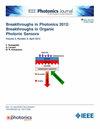光学望远镜指向系统的数字孪生模型
IF 2.1
4区 工程技术
Q3 ENGINEERING, ELECTRICAL & ELECTRONIC
引用次数: 0
摘要
指向精度作为衡量光学远望产品性能的重要指标之一,直接关系到望远镜的观测质量和效率,但受多种复杂因素的影响,指向校正的时效性问题影响着工作的顺利进行。在此研究中,本文主要探讨在有限观测条件下光学望远镜指向系统的误差建模问题。本文首先探讨了各参数和未知系统误差的变化规律。在此基础上,假设系统处于稳定状态,提出了一种应用于电光望远镜指向系统的数字孪生建模模型,通过有限观测条件:一颗新捕获的恒星,显著提高了局部指向误差修正的精度,并利用外场实验数据模拟和评估了孪生模型的可行性,为设备维护状态的评估提供了条件。本文章由计算机程序翻译,如有差异,请以英文原文为准。
A Digital Twin Model for Optical Telescope Pointing Systems
Pointing accuracy, as one of the important indexes to measure the performance of optical tele-scope products, is directly related to the observation quality and efficiency of the telescope, but affected by a variety of complex factors, the timeliness problem of pointing correction affects the smooth progress of the work. In this study, this paper focuses on the error modelling of optical telescope pointing system under limited observation conditions. In this paper, we first explore the changing law of each parameter and the unknown system error. On this basis, assuming that the system is in a stable state, a digital twin modelling model applied to the pointing system of an electro-optical telescope is proposed, which significantly improves the accuracy of the local pointing error correction by means of a limited observing condition: one newly captured star, and simulates and evaluates the feasibility of the twin model by using the experimental data from the external field, which provides the conditions for the evaluation of the maintenance status of the equipment.
求助全文
通过发布文献求助,成功后即可免费获取论文全文。
去求助
来源期刊

IEEE Photonics Journal
ENGINEERING, ELECTRICAL & ELECTRONIC-OPTICS
CiteScore
4.50
自引率
8.30%
发文量
489
审稿时长
1.4 months
期刊介绍:
Breakthroughs in the generation of light and in its control and utilization have given rise to the field of Photonics, a rapidly expanding area of science and technology with major technological and economic impact. Photonics integrates quantum electronics and optics to accelerate progress in the generation of novel photon sources and in their utilization in emerging applications at the micro and nano scales spanning from the far-infrared/THz to the x-ray region of the electromagnetic spectrum. IEEE Photonics Journal is an online-only journal dedicated to the rapid disclosure of top-quality peer-reviewed research at the forefront of all areas of photonics. Contributions addressing issues ranging from fundamental understanding to emerging technologies and applications are within the scope of the Journal. The Journal includes topics in: Photon sources from far infrared to X-rays, Photonics materials and engineered photonic structures, Integrated optics and optoelectronic, Ultrafast, attosecond, high field and short wavelength photonics, Biophotonics, including DNA photonics, Nanophotonics, Magnetophotonics, Fundamentals of light propagation and interaction; nonlinear effects, Optical data storage, Fiber optics and optical communications devices, systems, and technologies, Micro Opto Electro Mechanical Systems (MOEMS), Microwave photonics, Optical Sensors.
 求助内容:
求助内容: 应助结果提醒方式:
应助结果提醒方式:


